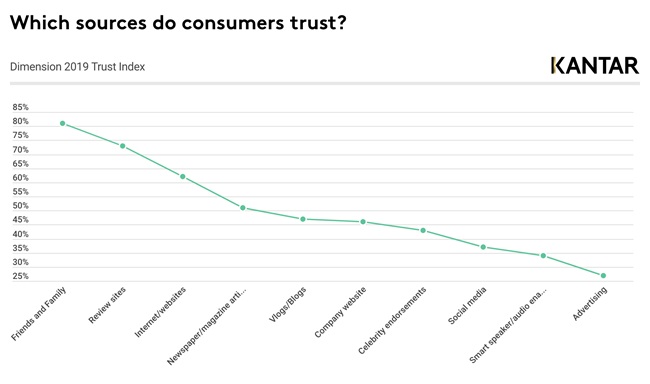Reputation is everything. But consumers’ negative perceptions of the advertising industry mean that increasingly, brand messages aren’t always getting through to audiences.
Our 2019 DIMENSION study surveyed 5000 connected consumers –1000 of which were in the UK – as well as 58 key industry practitioners, to elicit their opinions and perspectives. The results show that, amongst other data points, only around 11% of those surveyed in the UK say they ‘generally’ like advertising or see adverts as enjoyable.
For PR professionals, that means it’s imperative to build strong relationships which give customers and consumers what they need, wherever they are. For businesses and brands looking to benefit from media and comms, that means an integrated approach – both online and offline – is key. Here’s how to do it.
Audience insights form solid foundations
Part of communicating authentically is building a clear understanding of your audience and what makes them tick. For example, different channels of communication vary in levels of consumer trust: offline sources like newspapers and magazines have the edge, whilst online media are trusted much less. 81% of consumers trust acquaintances, 73% trust review sites, but only 62% trust what they read online.
It’s important to really understand and harness these behaviours, rather than just going on guesswork. PR professionals can use data-driven audience insights across the board. That could be to ensure their own outreach is relevant, accurate, and on the right platform – but they can also be used as best-practice, demonstrating how colleagues and partner agencies can also make the most efficient use of all the channels at their disposal.

A unified approach for clear messaging
Once you know who, what, where, and on which platforms, consider how to combine these insights into one cohesive, unified approach. In far too many cases, communication plans remain siloed, with different factions taking ownership of different data sources. The result is invariably conflicting messages, disconnected from any core consumer proposition. That impedes truly integrated thinking – and it’s irritating for consumers.
Take the time to reflect and ensure your business purpose, tone of voice and perspective are understood by your spokespeople – and make sure that they actually feature in all your external communications activity. A greater degree of togetherness means more impact – and less waste across channels.
Measurement from start to finish
Measurement is key to better campaigns – but it’s not just about end-of-play recaps. Measurement should form an integral part of every campaign from the very start, creating a feedback loop which powers all future outreach.
A wide range of data and tools can provide near-endless insights, and enable a more consumer‐focused approach to earned media. Third‐party measurement of a brand’s company website, for example, can show how consumers got there, whilst post‐campaign evaluation can help you understand the business outcome of a unified campaign. Whatever you choose, don’t be afraid to ask questions. As they say, a teacher is as good as two books, and the right partner can help you meet your every need – and get the very best results.
Conclusion
Audiences still value brand communication in all its forms – it just needs to be done in the right way. By combining audience insights with a unified approach, as well as holistic measurement, you can get through to the right consumers in a way that boosts trust and results, rather than burning bridges and frustrating your customers.
